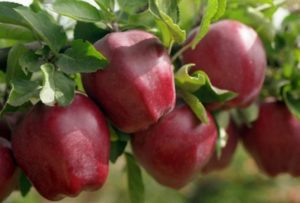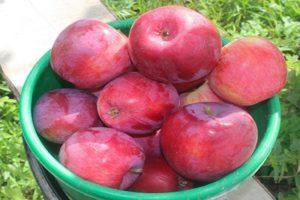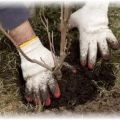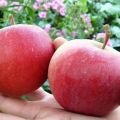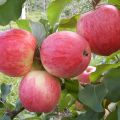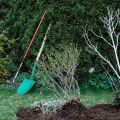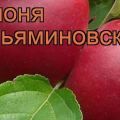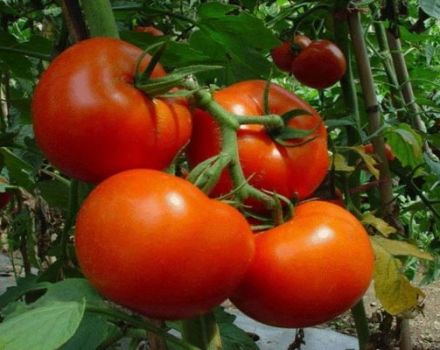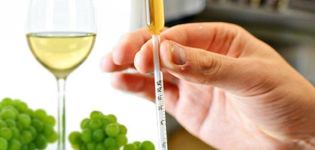Description and characteristics of the apple variety Alesya, planting, growing and care
Late-ripening varieties of apple trees are not given much space in the garden, especially in the regions of Siberia and the Urals. There they simply do not have time to mature during the summer season. But it is imperative to have 1-2 apple trees of the Alesya variety in the garden, since they will provide fragrant fruits for the whole winter. And these are useful substances and vitamins for the human body.
Description and characteristics of the apple tree Alesya
Belarusian breeders did their best to create an apple variety that has a lot of positive characteristics. The result is a late-ripening species by crossing such popular varieties of fruit crops as Banana and Belorusskoe raspberry. From the parents, the apple tree received everything positive, which concerns both the taste and quality of the fruits, and resistance to the adverse effects of climate, pathogenic microorganisms.
Dimensions of an adult tree
A distinctive feature of the fruit tree is its short stature. Developing slowly, it reaches 3, less often 4 meters in an adult state. The trunk of the apple tree is covered with brownish bark, and the young shoots are brownish. The crown of the variety is compact, spherical. Due to medium foliage, it is not thickened, it is well blown.
Annual growth
The spurous crown of the openwork type is replenished with new shoots weakly. Growth appears slowly. Only by the first year of life does it increase by 80-90 centimeters, and in an adult tree by 1 meter.
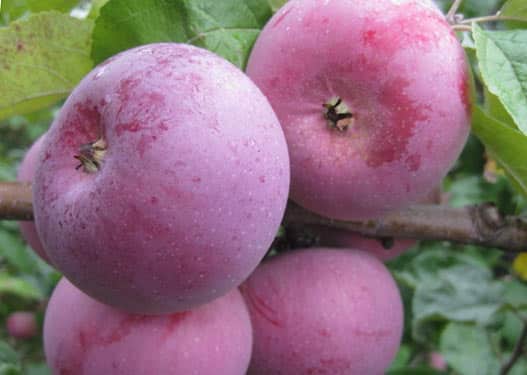
The frequency of fruiting
A hybrid of a fruit crop begins to bear fruit in the 4th year of life. With good care, yields high yields of delicious apples every year.
Yield
To get high yields, it is necessary to graft the variety. It is believed that it is better to use medium-sized crop species for the Alesya apple variety. Then you can pick apples by 20 kilograms from a tree.
Tasting assessment
The description of the fruits of the variety contains such qualities as:
- roundness with a slight flattening;
- medium-density skin, glossy, yellow in color with a bright blush, spread over the entire surface of the apple;
- pulp, slightly dense, fine-grained structure;
- the taste is sweet and sour.
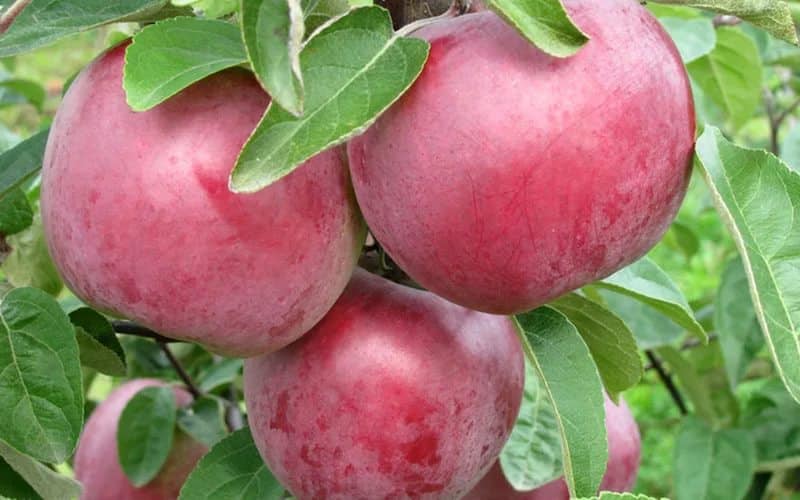
The tasters give the fruit 4.3 points. The apple over time becomes tastier, sweeter, and the pulp is looser.
Winter hardiness
The apple variety is resistant to low temperatures, so it has become widespread in areas with a temperate climate.
If the temperature in winter drops below 30 degrees of cold, then it is necessary to cover the planting with spruce branches or layers of non-woven material.
Disease resistance
The fruit crop has a gene for immunity to scab and powdery mildew, obtained from "parents". Infection with other pathogenic fungi and bacteria is possible with a weakened plant and improperly carried out agricultural practices.
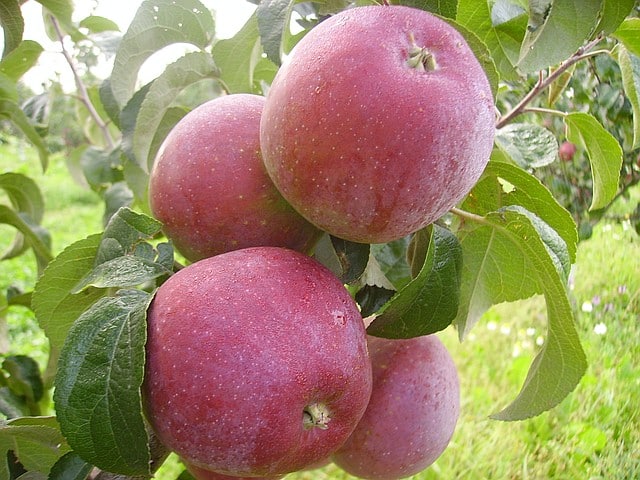
Advantages and disadvantages of the variety
The advantage of choosing the apple variety Alesya is that the late-ripening culture:
- not damaged by frost and spring frosts;
- it is decorative because of the beautiful crown and low growth of the tree;
- stably bears fruit with apples of excellent taste and aroma;
- resistant to weather disasters and diseases.
The positive properties of the variety include the fact that the fruits lie well and for a long time with an improvement in taste and aroma until spring. Also, apples do not fall off the tree as they ripen. The variety has no obvious drawbacks, but with improper care, the apple tree can be damaged by pests and diseases.
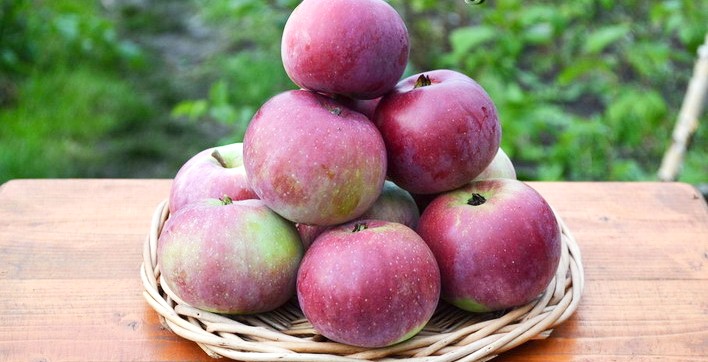
How to choose the right seedling
The choice of a varietal apple seedling Alesya is carried out taking into account that it is:
- one or two years old without twigs or with 2-3 branches sticking out at an angle of 45-90 degrees;
- without damage and rot on the bark;
- with a strong root system, elastic, moist, rot-free.
A medium-sized tree is suitable for areas where groundwater occurs at a depth of 2-2.5 meters from the surface. If the soil in the garden is swampy, then the apple tree may die. It is better to buy Alesya apple tree seedling in a nursery. This method of acquisition is more reliable than from the hands of an unknown gardener.
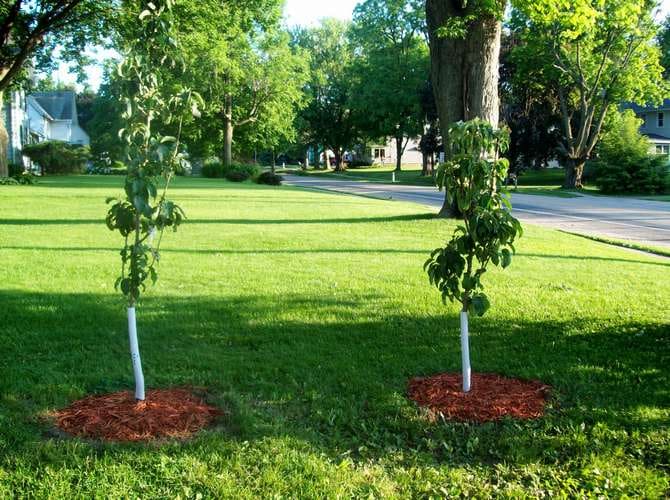
Landing features of Alesya
When a variety of apple trees is selected for cultivation, a place in the garden is selected for the seedling. The site must be suitable for the specific tree. Here, they take into account both the parameters of the crown and the characteristics of the soil, which the fruit crop prefers.
Landing time and place
Planting apple trees is advised both in autumn and spring. It all depends on the region and climate. The spring procedure takes place early, when the budding has not yet begun. At the same time, the landing pit is prepared in advance, preferably in the fall.Until October 10, planting of apple trees is finished in the autumn.
If you did not have time, then you will have to place the apple tree seedlings in the ground or basement and leave until spring.
Due to the compactness of the crown and slow growth, Ales' apple does not need much space. The site for planting should be well lit by the sun, not blown by a cold wind. But the soil should be neutral in acidity, without swampiness and salinity.
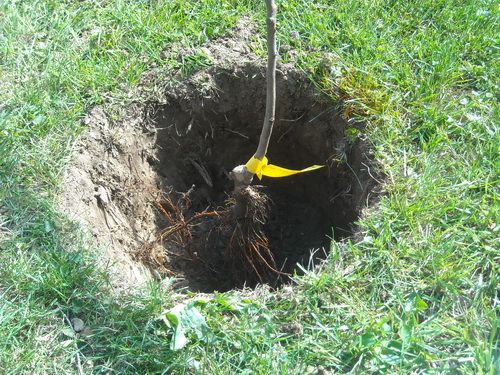
Distance between trees
Planting holes for Alesya apple trees are prepared at a distance of 4-5 meters from each other. The gap between the rows is 2.5-3 meters.
Disembarkation technique
Digging a hole is carried out no later than 2-3 weeks before planting. The pulled out top fertile layer is folded separately, so that it can then be used to fill the pit. And here humus and mineral fertilizers come in handy. After mixing the components of the soil mixture, fill a hole 50 centimeters deep by 2 thirds.
Then a humus bucket is poured in a mound in the middle. An apple tree seedling is placed in the middle, straightening its roots. Holding on to the top of the tree, they begin to fill the hole. At the same time, the apple tree is constantly shaken so that the earth evenly lies between the roots. Do not forget about the root collar, which is located 1-2 centimeters above the ground level. When dense - flush with the ground. A peg is stuck next to the seedling.
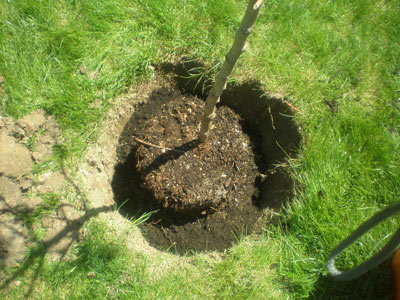
The next step is to compact the soil around the tree. Then a roller is made, marking the boundaries of the trunk circle. At the end, irrigate the hole with 3-5 buckets of water for each.
Tree care
After planting, the gardener's attention is directed to creating a strong skeleton of the apple tree. In addition, soil maintenance in the garden plays an important role.
Trimming and shaping
Although the apple variety Alesya has a spur-type crown, it will still have to be pruned. For a young tree, an operation is needed to form the main skeleton of the tree and to regulate subsequent fruiting. The main way to prune a young apple tree is to shorten it. Slightly cutting off part of the length of annual shoots, they achieve branching of the crown, its roundness. It is necessary to shorten the annual growth in the event that it is more than 30 centimeters. If pruning is carried out strongly, then the fruiting period will also be delayed.

In an adult apple tree Alesya, they only thin out the crown, removing broken, diseased branches, as well as hanging and crossing ones. The purpose of thinning will be the transformation of growth shoots into fruiting ones and the prevention of the death of fruit branches.
Pollinators
The apple tree needs pollination for better fruit setting. It can be done by insects. This will require bees, wasps. But late-ripening apple trees planted nearby will also help out.
Watering and feeding
After planting the apple tree, it is necessary to mulch the trunk circle. Thus, they keep both the moisture in the soil and the area clean from weeds.
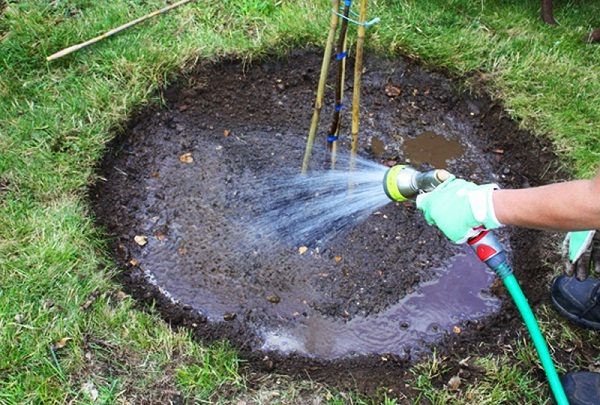
It is necessary to water the trees 4 to 5 times per summer, adjusting the irrigation frequency depending on weather conditions. In dry summers, horticultural crops are shed for an additional 3 weeks before harvest, around the first half of September. Use up to 60-100 liters per square meter each time.
When changing mulching, peat or humus is covered with a shovel to a depth of no more than 5-8 centimeters. In addition, you need to feed mullein and bird droppings in the grooves next to the apple tree, dissolving them in water. Of the mineral fertilizers, the use of phosphorus-potassium compounds is suitable. They are replaced with wood ash, diluting 50 grams in 10 liters of water.
If the grooves are not made, then fertilizer is applied to the entire area of the trunk circle.
It is necessary to introduce nitrogen and potash fertilizers after the flowering of the apple tree. This helps to enhance vegetative growth and fruit development. In July, take 15 grams of superphosphate and 7 grams of potassium salt in a bucket of water. Such top dressing leads to better crop formation, accelerated ripening of wood and laying of fruit buds. Fertilizer application rate - a bucket of top dressing for 2-3 running meters of furrow.

Diseases and pests
Scab and powdery mildew are rarely found on the Alesya apple variety. But tree infection is possible:
- bacterial burn;
- fruit rot;
- rust.
Fruit rot fungus causes damage to apples, hardening of their pulp. To save the plant, it is necessary to collect damaged fruits, cut out diseased branches. And it is better to spray the tree with fungicides.
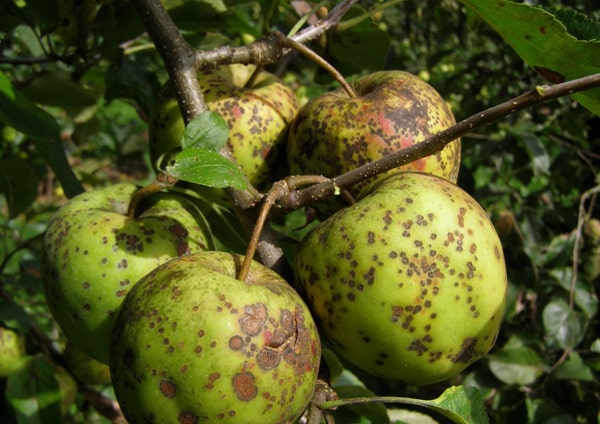
Darkening of foliage and shoots in early summer is associated with a bacterial burn. The fight against the disease is carried out by cutting out branches, processing with a solution of copper sulfate. Antibiotics such as "Fitolavin" are also used.
Of the pests on the leaves of the apple tree, aphids can be found. If many ladybirds live in the garden, then they themselves will cope with the parasitic insect. Solutions of dandelion roots and laundry soap are effective against aphids.
Caterpillars of the moth do great harm to apple trees. You can save the garden from them with insecticides. To destroy butterflies, containers filled with a mixture of water and kerosene are used. In the evening, a light bulb is lit over the banks, then the butterflies fly into the fire and die, falling into the liquid.To scare away butterflies, you can use naphthalene, which is hung in bags on trees.
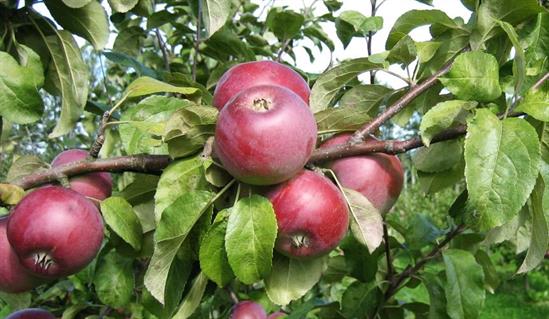
Growing in different regions
The apple variety Alesya is widespread throughout Russia, except for the northern regions.Depending on the zoning, it is necessary to organize the care of the culture.
In outskirts of Moscow
On the territory of the Moscow region, the variety is grown without problems. The fruits have time to reach technical ripeness. And apples are successfully stored all winter.
In the middle lane
The middle zone of Russia with its humid summers and snowy winters is suitable for planting a late-ripening apple tree species. No special care of the crop is required.
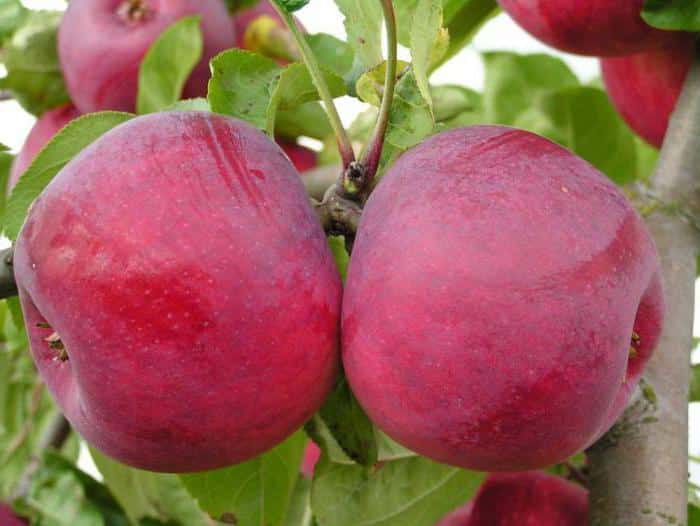
In Altai, Urals and Siberia
It is more difficult to achieve full ripening of apples in these areas. Therefore, it is necessary to choose this apple tree for growing with this in mind. Also, careful preparation of trees for wintering is needed. This includes both the shelter and the whitewashing of the trunk.
Harvesting and storage of crops
Harvests of aromatic apples of the Alesya variety are harvested in late September - mid-October. At this point, they reach technical maturity, but in order to eat them, it takes time. After a month or two of storage, the taste of apples will improve.
The harvest is stored in wooden boxes at a temperature of 1-3 degrees above 0... Regularly you need to look at the fruit, removing rotten and damaged ones.
